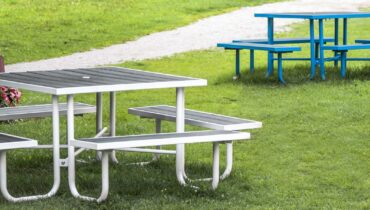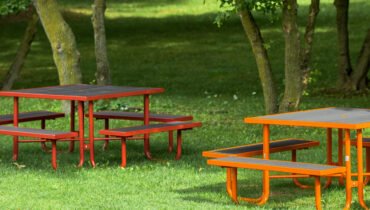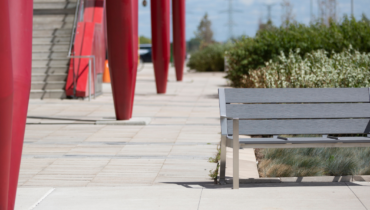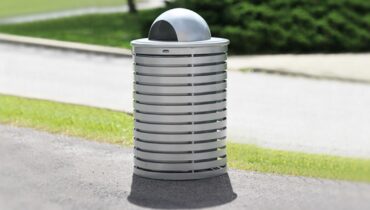An Introduction to the Green-Wood - Canaan Site Furnishings
What is “green wood”? As the name suggests, “green wood” is an environmental-friendly material made of wood and the products have all the advantages that a real wood product will have. Whether the production technology, process, and raw materials contain harmful substances, whether they will cause great damage to the environment and forests, and whether they can be recycled are the criteria of evaluating quality “green wood”.
“green wood” is also known as plastic wood, environmental protection wood, technology wood, recycled wood, or poly wood. Its proper name is wood-plastic composites, which is commonly known as WPC in the industry. It was molded and manufactured in a special production process, made from wood or bamboo chips, wheat straws, rice brans, peanut shells, or cotton straws mixing with a certain proportion of plastic materials. It maintains the appearance and texture of the solid wood and has moisture-proof, water resistance, acid and alkali resistance, antifungal, anti-static, mothproof, and other properties. Moreover, “green wood” products are fire-resistant, have no pollution, and can be recycled. North America is the region with the fastest development and largest consumption of wood-plastic composites in the world. Over the past 10 years, the growth of the WPC market in the United States has been maintained at more than 10%.
Although eco-friendly wood materials are expensive than pure wood, the cost is gradually reduced with the growth and development of the production technology. Additionally, the cost is furtherly decreased in the recycling process, many consumers are still willing to accept relatively high prices because of the advantages of WPC.
10 Advantages of WPC
Rich color, modeling at will: the product is rich in color, can be curved, and formed into arbitrary shapes. It fully meets the designer’s endless imagination and creative inspirations.
Comfortable and natural: it has the natural appearance and texture of wood.
Wide range of uses: it can be widely used in all kinds of gardens, leisure and entertainment places, and commercial spaces, etc.
Long service life: the product life can last up to 15 years.
Waterproof, moisture-proof, anti-corrosion, no deformation: WPC can be directly used in the dry and wet environment from 70 ℃ to -40 ℃ without deformation, cracking, warping, mildew, and corrosion.
Anti UV and aging: it performed excellently on anti-aging, UV, and pollutions. The color fastness meets the national standards which can be safely used for indoor and outdoor decorations and reduces costs on maintenance.
Mothproof and easy to clean: it can effectively eliminate insect disturbance, and is convenient to clean and take care of.
Heat preservation and insulation, and flame retardancy: the thermal conductivity of WPC is far lower than that of aluminum and plastic. It can insulate heat in summer and keep warm in winter. It has a very good energy-saving effect. Its flame retardancy can reach the national standard of Level-B1.
Eco-friendly and healthy: the product does not contain benzene. The content of formaldehyde is lower than the European top environmental protection standard EO level standard. It is a revolutionary energy-saving and environmental protection product of decorations. WPC greatly improves the comprehensive utilization of wood and can be recycled.
Easy installation, low comprehensive cost: “green wood” can be nailed, planed, and sawed. It can be installed efficiently and quickly, and no painting is required. It doesn’t have odors so can be used immediately after installation, saving time, labor, and money.
Characteristics of WPC
- Environment friendly: the use of recycled materials (wood dust and plastic) does not require anti-corrosion treatment.
- No routine maintenance is required, has a longer service life than wood, does not absorb moisture, dampness, and rot. It prevents insects, does not crack and deform, and is not sensitive to the cold and hot environment.
- Polyolefin wood-plastic composites have good mechanical properties and can be widely used as load-bearing structural materials.
- 95% of the raw materials of polyolefin wood plastic are recycled, so the cost is low and its products can be 100% recycled.





